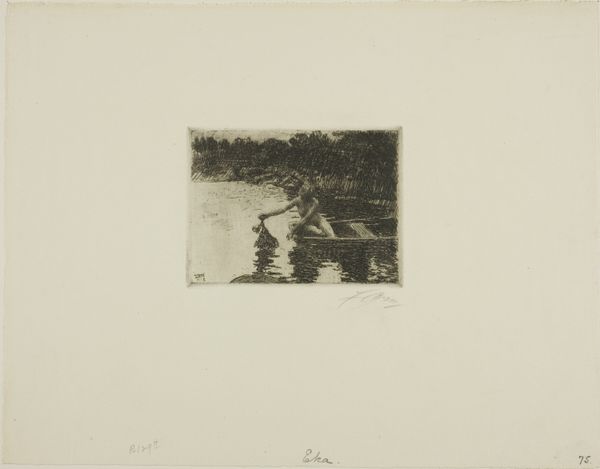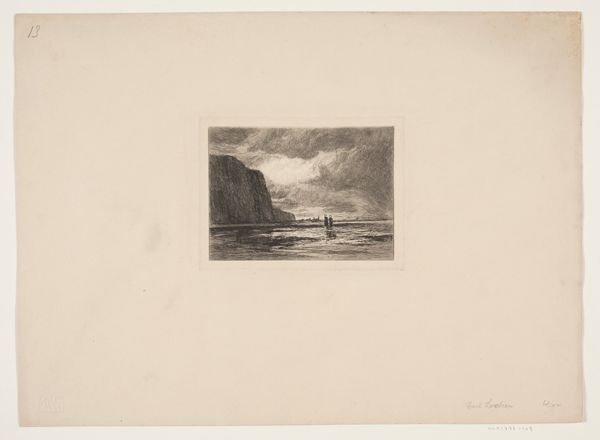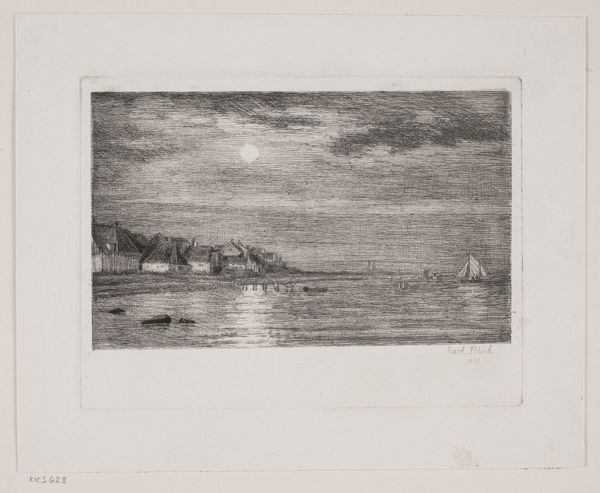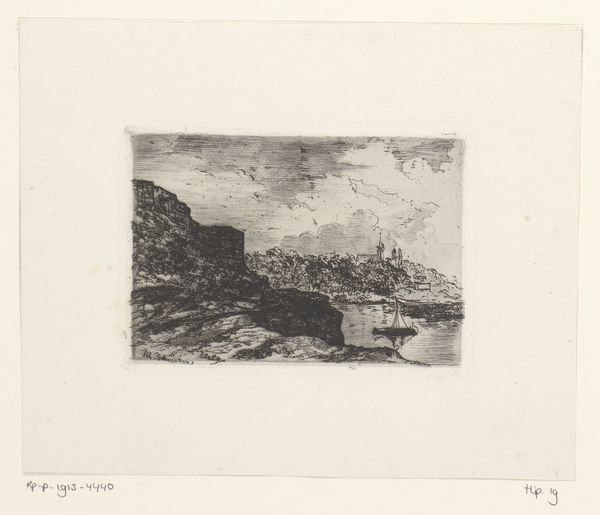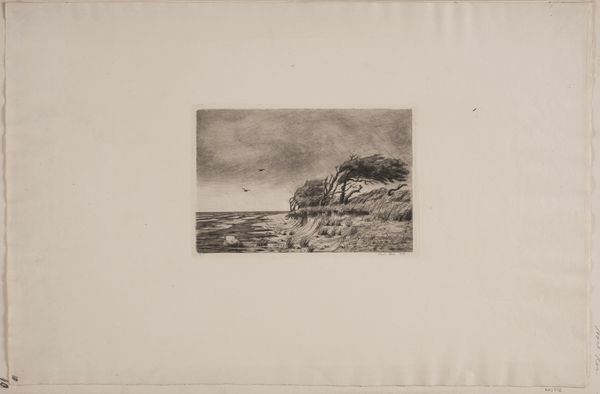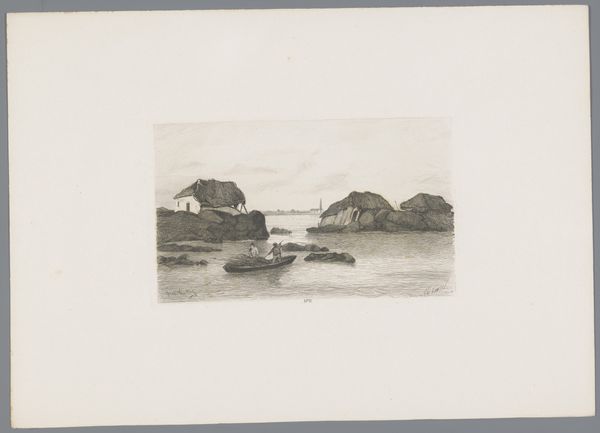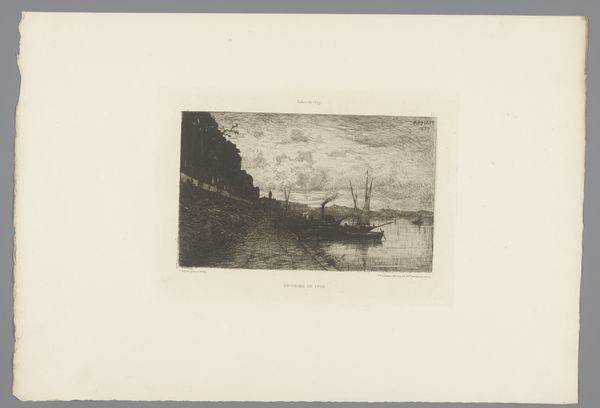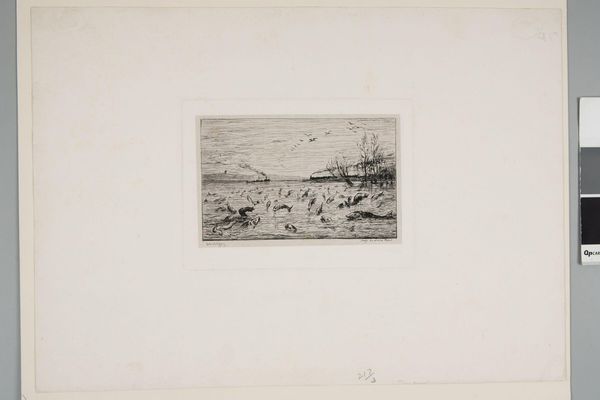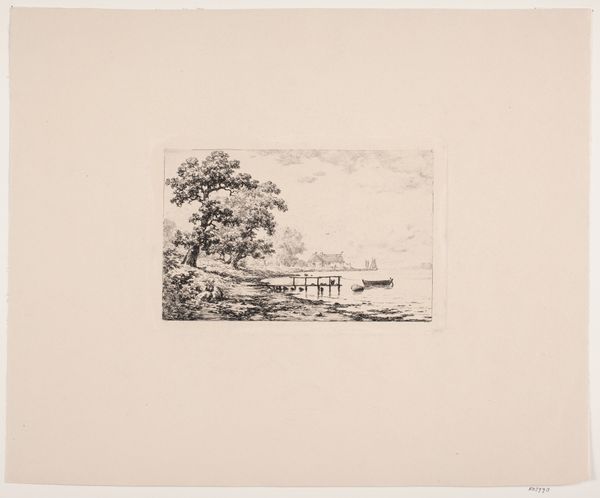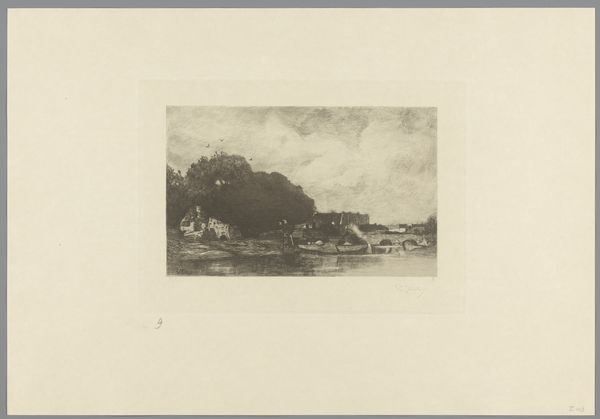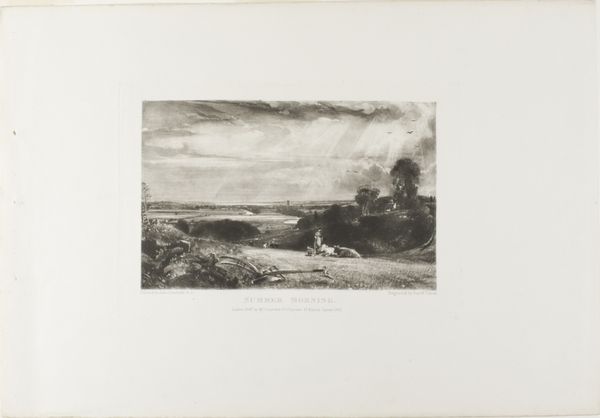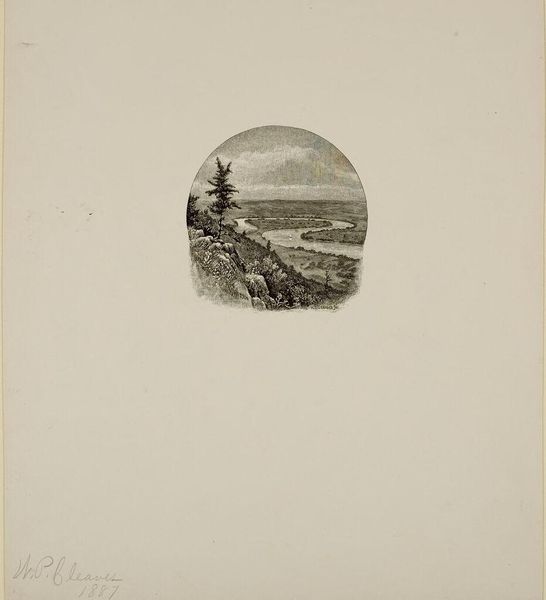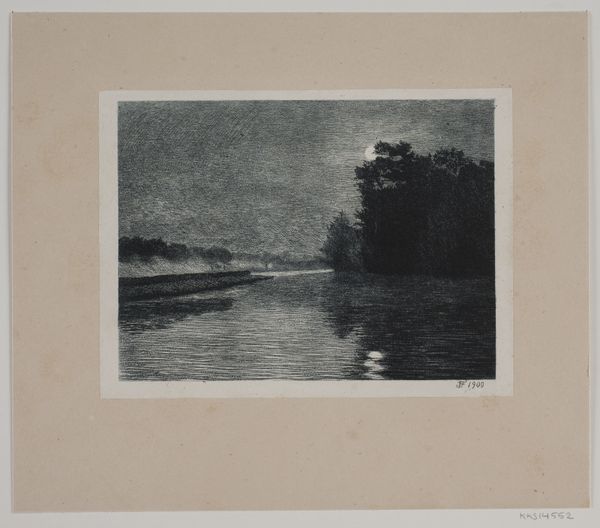
drawing, print, etching, paper
#
drawing
#
ink paper printed
# print
#
etching
#
landscape
#
paper
#
france
#
realism
Dimensions: 95 × 123 mm (image/chine/plate); 243 × 319 mm (sheet)
Copyright: Public Domain
Charles Jacque made this print, Six Cows at a Watering Place, using etching, a printmaking process that dates back to the Middle Ages. To create this image, the artist would have coated a metal plate with a waxy, acid-resistant substance called a ground, and then scratched an image into it with a needle. The plate was then immersed in acid, which bit into the exposed metal, creating recessed lines. Look closely, and you'll see the result of this painstaking process. The rich velvety blacks are not due to dense pigmentation, but rather the accumulation of tiny etched lines. It's a laborious method, but the results are stunning. Jacque clearly relished the capacity of etching to render subtle nuances of light and shadow, creating a tranquil pastoral scene. The labor-intensive nature of etching stands in stark contrast to the industrialization that was transforming Europe during Jacque's lifetime. This contrast forces us to consider the social and economic implications of different modes of production and appreciate the unique value of handmade art.
Comments
No comments
Be the first to comment and join the conversation on the ultimate creative platform.
